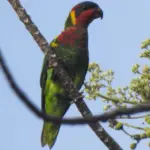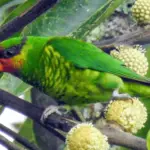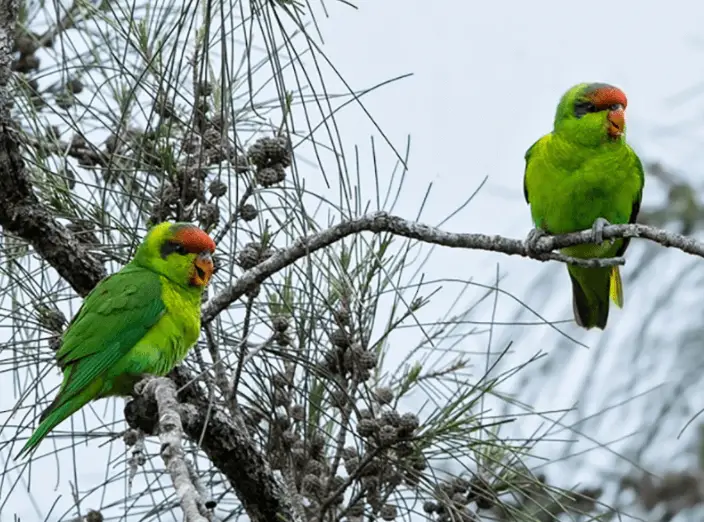Iris Lorikeet 20–22 cm. Bill orange-red; crown red shading to blue-edged purple on the hind crown, bordered yellow on nape and green on the upper mantle;
broad patch behind eye purplish; rest of face and underparts yellowish-green, latter with irregular narrow green bars; wings and tail green.
Systematics History
Editor’s Note: This article requires further editing work to merge existing content into the appropriate Subspecies sections. Please bear with us while this update takes place.
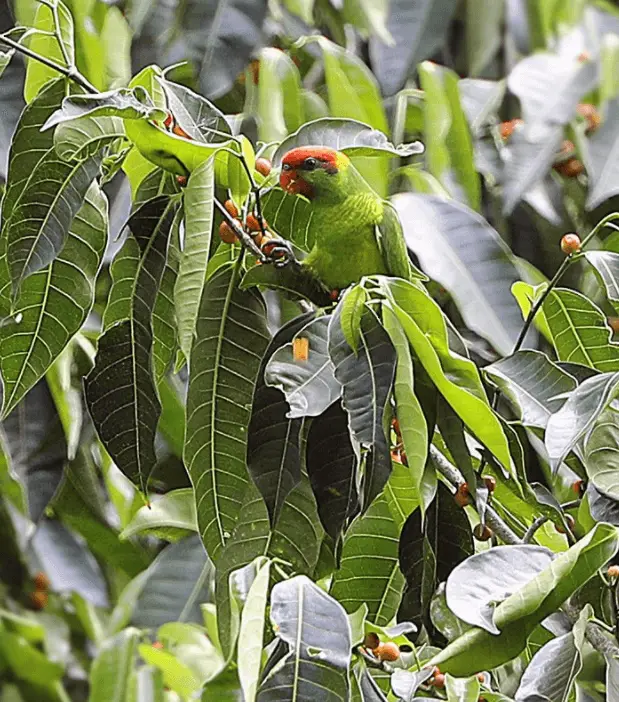
Iris Lorikeet
Has sometimes been placed in Neopsittacus. The validity of race rubripileum is questionable and claimed differences from nominate may be due to age or individual variation. Three subspecies are tentatively recognized.
Subspecies
Saudareos iris iris Scientific name definitions
Distribution
Saudareos iris rubripileum Scientific name definitions
Distribution
Saudareos iris wetterensis Scientific name definitions
Distribution
Distribution
Editor’s Note: Additional distribution information for this taxon can be found in the ‘Subspecies’ article above. In the future, we will develop a range-wide distribution article.
SOURCE: Jan Dolphijn
Habitat
Primary and tall secondary monsoon forest, hill, and lower montane forest and woodland, from sea-level to 1500 m, mainly above 600 m; on Wetar seen in scattered trees around a village.
Movement
No information, but predicted to wander in search of flowering trees.
Diet and Foraging
Visits flowering trees including Sesbania. Recorded on Wetar feeding in Eucalyptus alba and in tamarinds (Trainor et al. 2009).
Sounds and Vocal Behavior
Not well documented. Iris Lorikeet Calls include a strident “shreet!” and a more subdued lower-pitched “tchrut”. When perched, also some squabbling notes. Vocalizations overall are rather mellow, less harsh, and shrill than most of this species’ relatives.
Breeding
No information from wild. In captivity: 2 eggs; incubation lasting 23 days; Iris Lorikeet nestling period 67 days.
Conservation Status
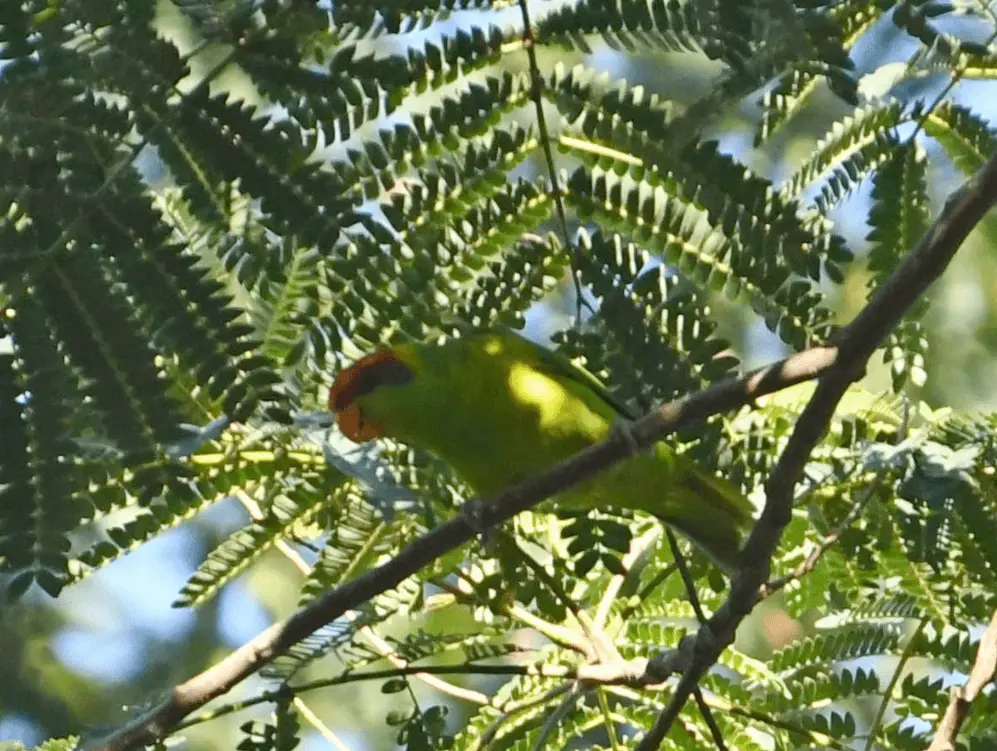
Not globally threatened. Currently considered Near Threatened, and previously, Vulnerable. CITES II. A BirdLife “restricted-range” species.
Judged the least common of the three lorikeets on Timor in 1974, but presumably still relatively secure on a still partly forested and fairly large island; probably locally common at higher elevations on Mt Mutis.
Iris Lorikeets were recorded on Wetar in 2008–2009 from the coast to the uplands, mostly feeding in groups of 6 to 20 (Trainor et al. 2009).
In the period 1985–1990 reported international trade averaged 139 birds per year, but even this fairly modest rate may be excessive and in 1989 the EC banned the importation of the species from Indonesia.

